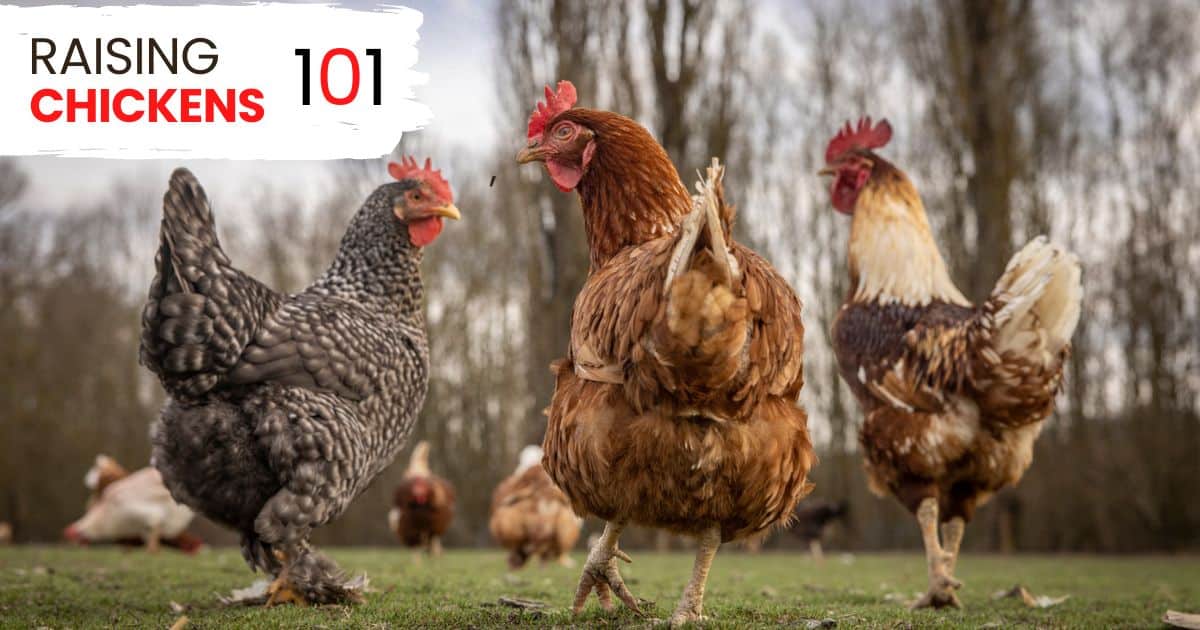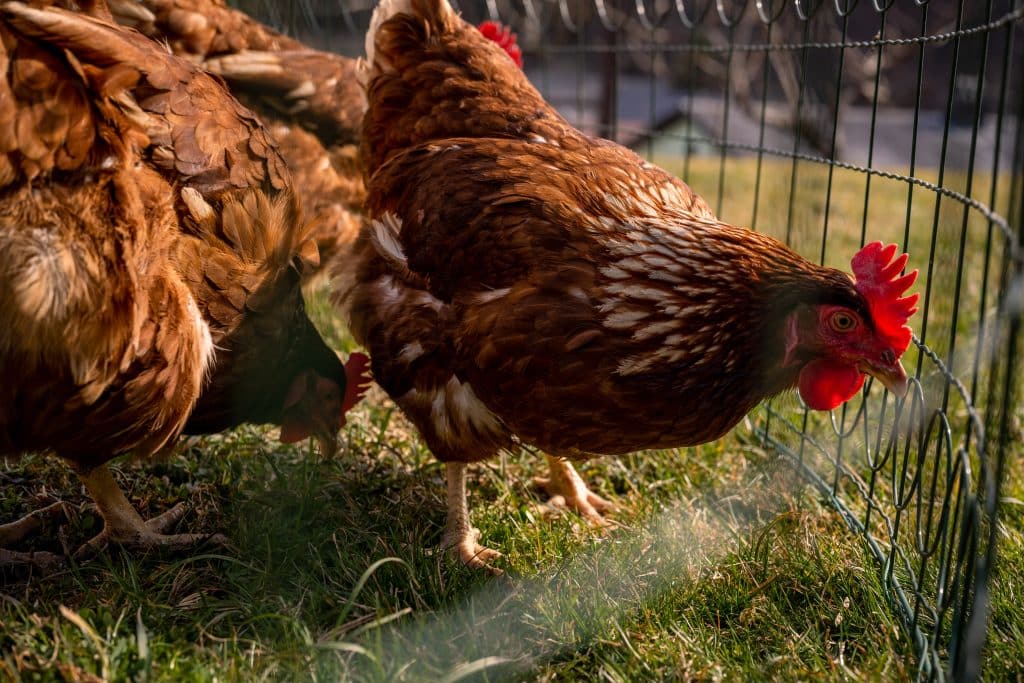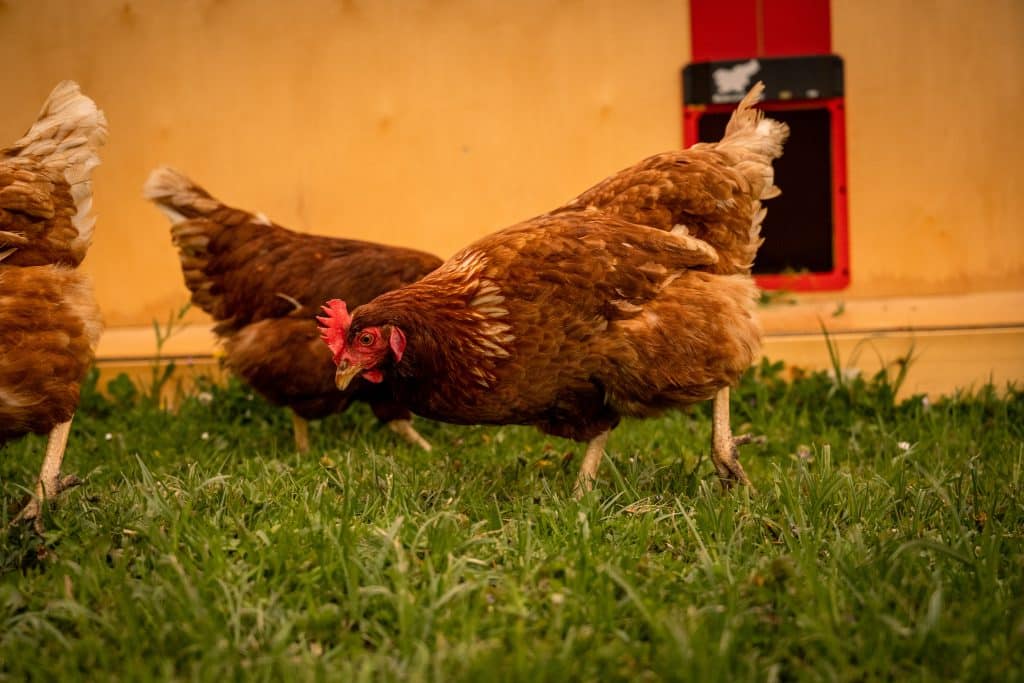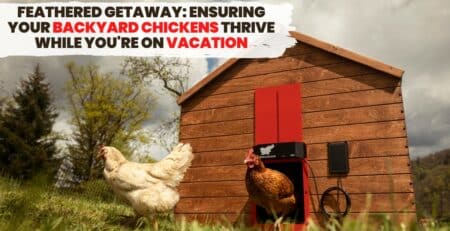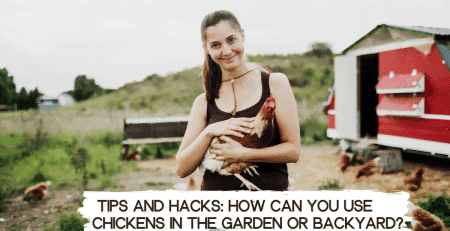Are you a beginner who wants to raise backyard chickens but you don’t know where to start? If you’re planning to raise chickens for the first time, you probably have many questions. Should you start with tiny little chicks or more mature, ready-to-lay birds? What do chickens eat, and how much? What kind of shelter do chickens need? How do you take care of chickens? With all this to consider, raising chickens as a beginner can seem overwhelming, but once you know the basics, you’ll be off to a great start.
The four basic things you’ll need to provide your backyard chickens with are food, water, shelter, and protection. Chickens are pretty good at taking care of themselves. They don’t need much attention or supervision. They’ll peck, scratch, and dig, keeping themselves entertained all day. Once you get started, you’ll learn that raising chickens isn’t hard at all–in fact, many people find it to be an enjoyable, relaxing hobby.
What to Feed Backyard Chickens
Feeding your chickens properly is easy once you know what to do. Mature chickens will eat about ¼ pound of food per day, usually in a pellet form that can be bought at your local feed store. To save time on feeding, a gravity-fed chicken feeder is a good way to keep your chickens’ food stocked up. Although pellets are a great choice of feed, your chickens will benefit by adding a little variety, such as fresh greens, vegetables, and fruit, to their daily diets.
Most chicken pellets have a well-balanced blend of protein, calcium, and other nutrients and are usually fortified with other vitamins and minerals that your chickens need. As the name suggests, layer pellets come in a compressed pellet form and are specially formulated for egg-laying hens. Layer pellets are also safe for roosters. For younger chickens (pullets), grower pellets provide the proper nutrition for their age.
Scratch grains are made up of cracked whole grains, usually corn or wheat. Scratch grains should not be confused with chicken food; they should only be used as a treat or along with pellets. Scratch grains can be sprinkled around your chicken run to encourage pecking and foraging. Scratch grains should not make up your chicken’s entire diet, however, because they don’t have much nutritional value. If you feed your chickens scratch grains, give them the grit to help them break down the grains. Grit is made of small stones or pebbles that help your chickens break down food in their gizzard.
You can also feed your chickens plenty of leafy greens such as lettuce, kale, turnip greens, and chard to keep them happy if they’re stuck in the pen and can’t forage. Leafy greens will also encourage your hens to lay some extra eggs during winter. Chickens will also enjoy various types of fruit, including watermelon, blueberries, and strawberries.
How Much Water Do Backyard Chickens Need?
Chickens are very active little critters that need a clean, fresh water supply throughout the day. They’ll drink about a pint a day, depending on how hot it is! In the summertime or in hot climates, be sure to check your chicken’s water supply multiple times a day. Watering your chickens doesn’t have to be as hard as you may think. There are numerous ways to construct your own automatic watering system that will keep fresh, clean water flowing to your chickens all day long.
What Kind of Shelter to Provide for Backyard Chickens
Whether you plan on keeping your chickens in a “pen” or letting them free-range, they still need a form of shelter to keep them safe from the predators and the weather, as well as a place to lay eggs and to roost at night. This is a basic list of what you’ll need as a beginner when planning to raise backyard chickens.
Coop-A chicken coop is the basic shelter that all chickens need. They will roost (sleep) in the coop at night and lay eggs in nesting boxes during the day. Your chicken coop should be large enough to provide 3 to 5 square feet of space per chicken, so plan the size accordingly. They’ll need about 8 inches of roosting space each and 1 nesting box for every 3 to 5 hens.
Your coop should have a door that is easily accessible to your chickens. An automatic chicken coop door is a great investment to keep them well protected and save you time. Run-Chicken’s automatic chicken coop door provides extra protection from predators at night with its sturdy aluminum build. It automatically opens and closes via light sensor, ensuring your chickens are safely closed in every night. Run-Chicken’s automatic chicken coop door will also open at sunrise, so you don’t have to wake up at the crack of dawn to let the chickens out.
Run- A chicken run is a fenced area attached to the chicken coop, allowing your chickens space to roam if they aren’t free ranging. A chicken run should be large enough to allow about 10 square feet of space per chicken, but remember that with chickens, the more space they have to roam, the happier they’ll be. You can also have your chicken’s feeder and waterer located in the chicken run in a shady spot. Chickens should have direct access to the coop from the run via a door to lay eggs and for shelter from the weather. An automatic chicken coop door from Run-Chicken is the perfect size for any chicken breed, even ducks, and it will automatically close at sunset, keeping your chickens safe and secure.
Nesting boxes- If you plan on raising backyard chickens, especially for eggs, you will need nesting boxes in the chicken coop. Nesting boxes are boxes where hens lay eggs. They are usually lined with a layer of bedding such as straw or wood shavings–they can basically be described as hen nests. You’ll only need one nesting box for every 3 to 5 hens since hens like to share. Run-Chicken unique, hexagon-shaped aluminum nesting boxes are an excellent choice if you’re looking for something that’s not made of plastic. They are sturdy, secure boxes that can be mounted to the wall. They feature a plate or “lip” on the bottom that will keep eggs in the box when your hens exit, resulting in less egg loss. It’s easy to hang them in an aesthetically-pleasing honeycomb pattern.
Roosts- Roosts are bars that chickens climb on to sleep at night. Ensure you have enough roosting space to allow at least 8 inches per chicken. Remember that as they sleep, they will still poop–so don’t place the roosting area above anything that can get soiled, such as water or food. You can also install a tarp or other system under the roost to collect the manure to be used as fertilizer.
How to Keep Backyard Chickens Protected
One thing to know if you’re planning on raising backyard chickens is that they will draw predators to the area, such as hawks, foxes, raccoons, opossums, and even rats and mice. To keep your chickens well-protected, it’s a good idea to provide some type of fenced enclosure for them. If you plan on free-ranging your chickens, remember that they must also be protected from predators, so consider fencing in your property.
To keep predators out of your chicken run and chicken coop, fence it in using sturdy wire fencing. Covering the run or tractor area with a wire mesh at the top is also a good idea to keep out flying predators, such as hawks, or climbers like raccoons. To keep your chickens safe at night, Run-Chicken’s automatic chicken coop door will close securely at sunset, ensuring your chickens are locked in tight as the sun sets. This automatic chicken coop door is made of sturdy aluminum that will keep out the most adamant predators.
Here are more tips on preventing the damage predators can cause to your coop and flock.
Other Tips for Raising Backyard Chickens for Beginners
Egg Laying- On average, a laying hen will lay one egg per day. There are many breeds that are efficient egg-layers, some laying as many as 300 per year. Find out which ones are egg-laying machines. You should collect your eggs every day to ensure that you are receiving fresh eggs. Hens usually don’t lay as many eggs in the winter as they do in the warmer months, so be prepared for a drop in egg production as the cold comes in. You don’t need a rooster for your hens to lay eggs. If you have a rooster present, you may end up with fertilized eggs, which are still safe to eat. You can hatch fertilized eggs if you’re looking to add more chickens to your flock.
Molting- Chickens go through a phase called “molting” when the seasons change from hot to cold and vice versa. They start to lose their feathers and may become very scraggly and beat-up looking, but they will grow new feathers for the upcoming season. Some breeds molt while others don’t, and sometimes it all depends on the climate.
Pecking Order- If you’re new to raising backyard chickens, you might find it surprising to learn that they have a hierarchy established amongst themselves called a pecking order. You may not notice when the order is established if you are raising your flock from tiny chicks. If you buy pullets or full-grown chickens, the signs are more prevalent. Chickens will peck and fight each other to establish their hierarchy, with the larger birds usually succeeding as the dominant ones. They usually won’t hurt each other much unless you have too many rowdy roosters. Avoid mixing small-breed chickens with large-breed chickens because the smaller ones may get bullied due to their size.
Climate and Weather Conditions- Chickens are very hardy birds that can tolerate temperatures that are below freezing. With that being said, they prefer warmer climates. Many chicken breeds can live in different types of climates, so be sure to do your research on which breed is the best fit for the climate in your area.
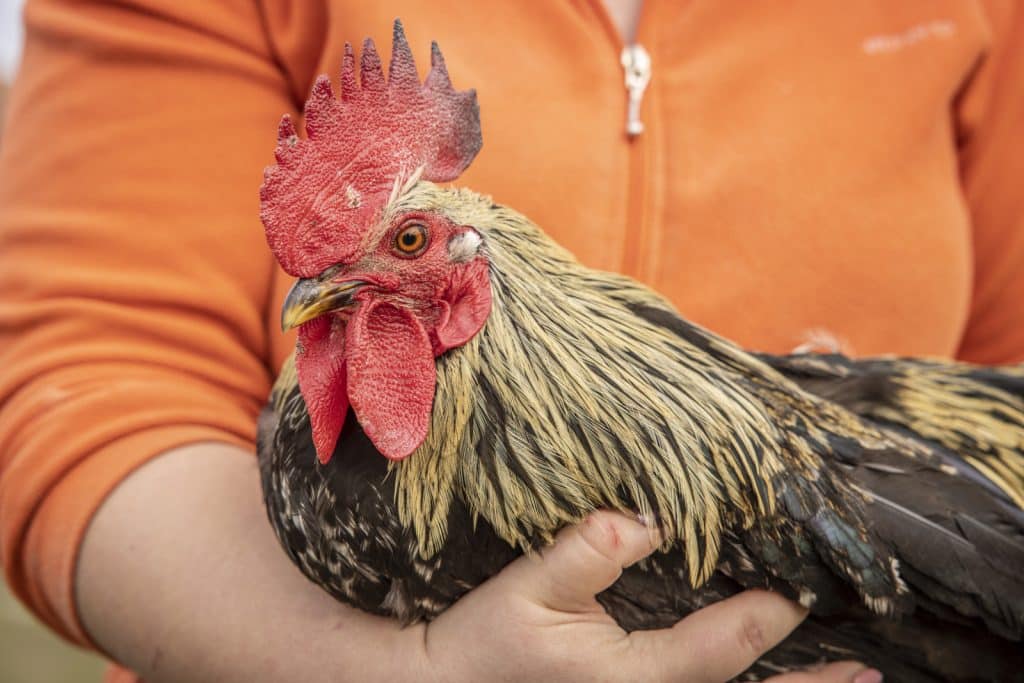 Raising backyard chickens doesn’t have to be a lot of hard work–many people come to enjoy it as a relaxing hobby. Once you learn the basics of keeping chickens, you’re sure to have a backyard full of happy, healthy, feathery little friends.
Raising backyard chickens doesn’t have to be a lot of hard work–many people come to enjoy it as a relaxing hobby. Once you learn the basics of keeping chickens, you’re sure to have a backyard full of happy, healthy, feathery little friends.
If you need any more tips on what you need to get started, check this Rookie’s guide to raising backyard chickens or join our Facebook group Chicken&Egg Lovers.

